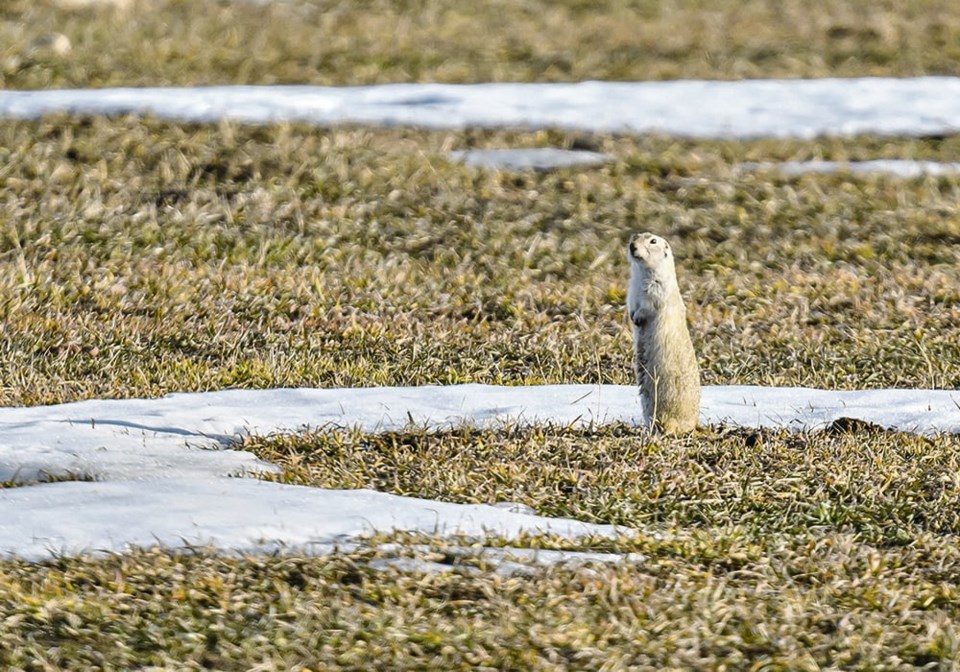WINNIPEG, Man. — The weather in December, as many Canadians noticed, was abnormal.
As an example from the Prairies, the average daily high in Saskatoon was 0.5 C for the first three weeks of the month.
That’s eight degrees warmer than the normal daily high for the month of December.
Barrie Bonsal, a research scientist and climate expert with Environment and Climate Change Canada, said the weirdly warm weather can be explained by two words — El Nino.
“The jet stream is stuck in this position, which is very El Nino like,” Bonsal said from his office in Saskatoon, a few days before Christmas.
“Essentially, it blocks the cold air outbreaks. That’s the main thing that it’s doing.”
From the summer of 2020 until early 2023, La Nina dominated the weather patterns in North America. La Nina is when surface water in the eastern Pacific Ocean is cooler and El Nino is a period when the ocean water is warmer.
“During El Nino, trade winds weaken. Warm water is pushed back east, toward the west coast of the Americas,” said the National Oceanic and Atmospheric Administration.
An El Nino usually delivers warmer and drier weather to Western Canada. La Nina has the opposite effect — winters are colder and wetter.
This El Nino is expected to last until the spring of 2024 and possibly into the summer.
But that doesn’t mean temperatures in Saskatoon will be around zero until March.
“It would be unprecedented that it persisted the whole winter and we didn’t get any cold air outbreaks,” Bonsal said. “Even in the strongest El Ninos, that hasn’t happened. But on average, we’re going to see this pattern throughout the winter…. That’s what the past El Ninos tell us.”
It’s possible that climate change has played a role in the strange weather this winter.
Climatologist David Phillips said Canada’s weather has definitely changed in one way. Patterns now persist for weeks instead of days.
“It’s a stationary pattern that sets up. It’s like an unwanted house guest. It won’t leave…. It just sits there.”
It’s notable that Saskatoon temperatures in December were possibly eight degrees warmer than normal. Eight degrees is a huge swing from typical, and climate change could be playing a role.
“The background warming is making those (temperature) anomalies a bit higher,” Bonsal said.
Most people prefer a -2 C day in January to -32 C, but this El Nino could exacerbate dry conditions in western Saskatchewan and southern Alberta.
Without snow and cold, those regions will only get drier.
“Significant long-term moisture deficits remained across western Saskatchewan, from North Battleford towards Leader,” said Agriculture Canada’s Drought Monitor, “leaving the area vulnerable to water supply issues in the spring without sufficient snowpack.”
The situation is concerning, but decent snowfalls are possible during an El Nino, Bonsal said.
“If you get a couple of cold air outbreaks and they’re associated with some big storms, you can get close to normal winter precipitation.”
Even if snowfall is average this winter, western Saskatchewan and southern Alberta will need inches of rain in the spring to recharge the soil, creeks, ponds and reservoirs.
The models suggest El Nino could wane in the spring and sea temperatures in the Pacific will moderate.
But for now, this El Nino looks relatively powerful.
“It’s definitely not the strongest on record,” Bonsal said. “It’s up there into the fairly strong category. I think 2015-16 and 1997-98 were stronger.”




